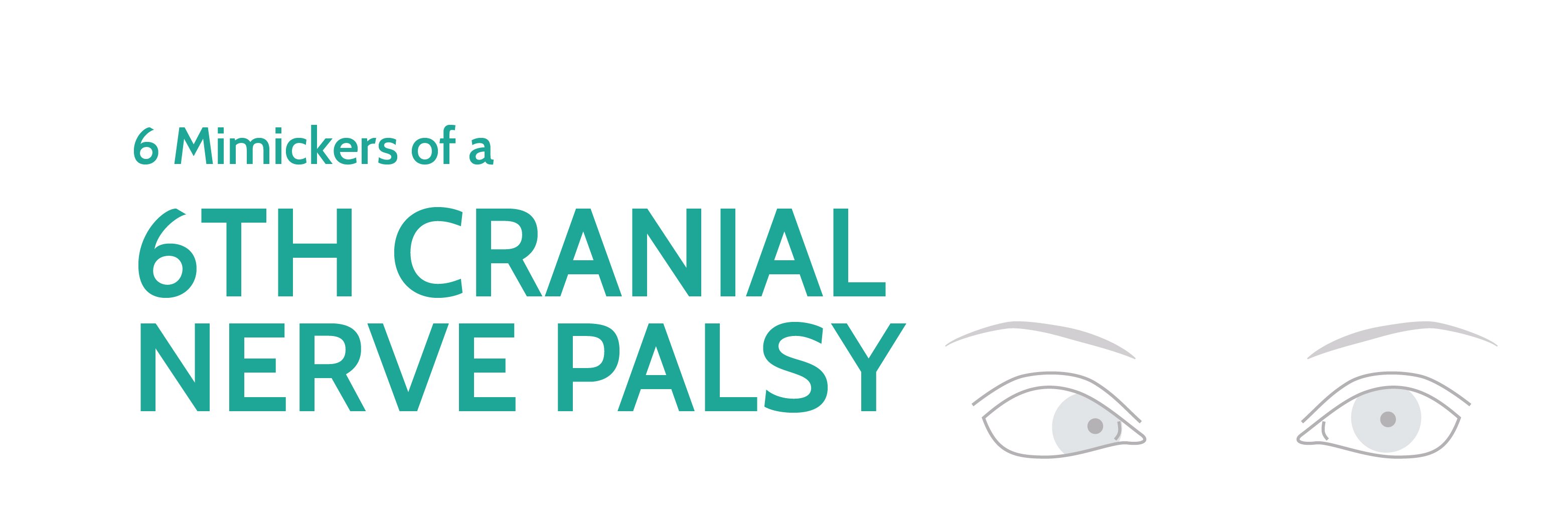
The abducens nerve (6th cranial nerve) controls a single extraocular muscle; the lateral rectus. The lateral rectus is primarily responsible for abducting the eye. A palsy of the abducens nerve is the most common ocular motor paralysis; the affected eye turns inward toward the nose and is unable to abduct properly.
The deviation is constant and is typically greater at distance fixation than at near. The esotropia is also more noticeable when the patient is looking toward the affected side. Diagnosis of a 6th cranial nerve palsy may seem pretty straight forward when piecing together the patient’s history and examination findings; however, you should keep in mind that there are several conditions that may imitate isolated lateral rectus weakness.
We will review these 6 mimickers of a 6th nerve palsy for your review!
Thyroid eye disease
A forced duction test on the affected eye can help rule-out thyroid eye disease as the cause of an abduction deficit. If the eye cannot be abducted passively with a cotton swab or forceps, true weakness of the lateral rectus is not present; it is either restriction or adhesion of the medial rectus that is causing the limitation of gaze.
Myasthenia gravis
Essentially any eye muscle or motility pattern deficit can occur with myasthenia gravis; therefore, it should remain on the differential diagnosis list for any patient presenting with binocular diplopia. It is the variability of diplopia either by patient history or of measurements between examinations that would be more suggestive of myasthenia gravis.
Duane syndrome
Patients with Duane retraction syndrome (Type I) show a substantial abduction deficit with a comparatively small esotropia in primary gaze. In these cases, the affected eye will also retract with adduction. Additionally, patients with Duane syndrome do not typically complain of diplopia.
Spasm of the near reflex
Patients presenting with spasm of the near reflex will show variable degrees of esotropia and abduction. Careful observation of the pupil in these cases will show slight constriction with attempted abduction.
Old orbital blowout fracture
An old contusion injury of the orbit may have caused a fracture in the ethmoid bone. Fibrosis or entrapment of the medial rectus muscle could result in restriction of abduction.
Congenital esotropia
This should be an easy one to rule out, as the patient will often have a longstanding history of strabismus. However, the esotropia may be very small angle, and the patient may be completely asymptomatic. If they never had a proper eye exam, this could have been missed for a very long time!
So, the next time you have a patient with a suspected lateral rectus palsy, just remember to keep these other conditions in the back of your mind as they may mimic what would seem to be an easy diagnosis of a 6th nerve palsy!
